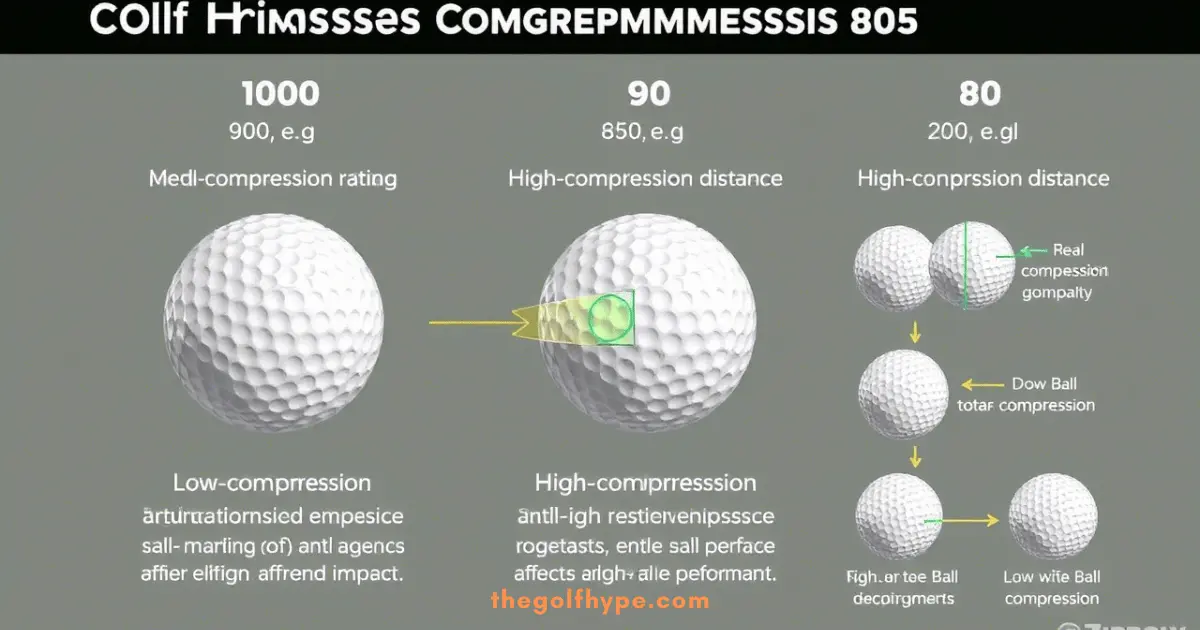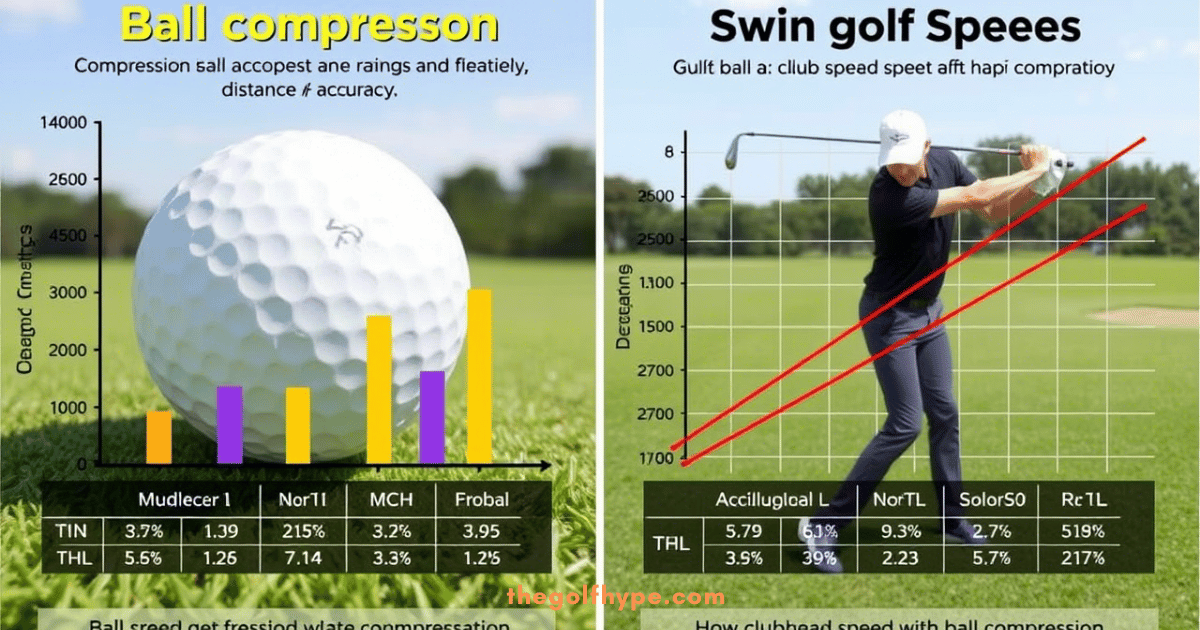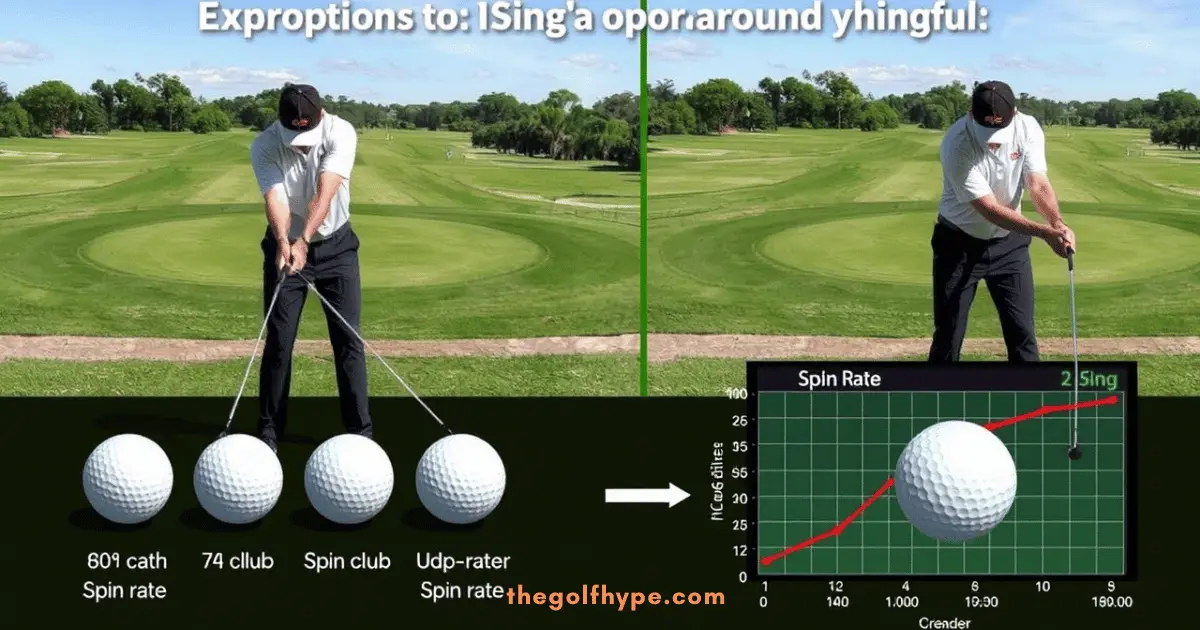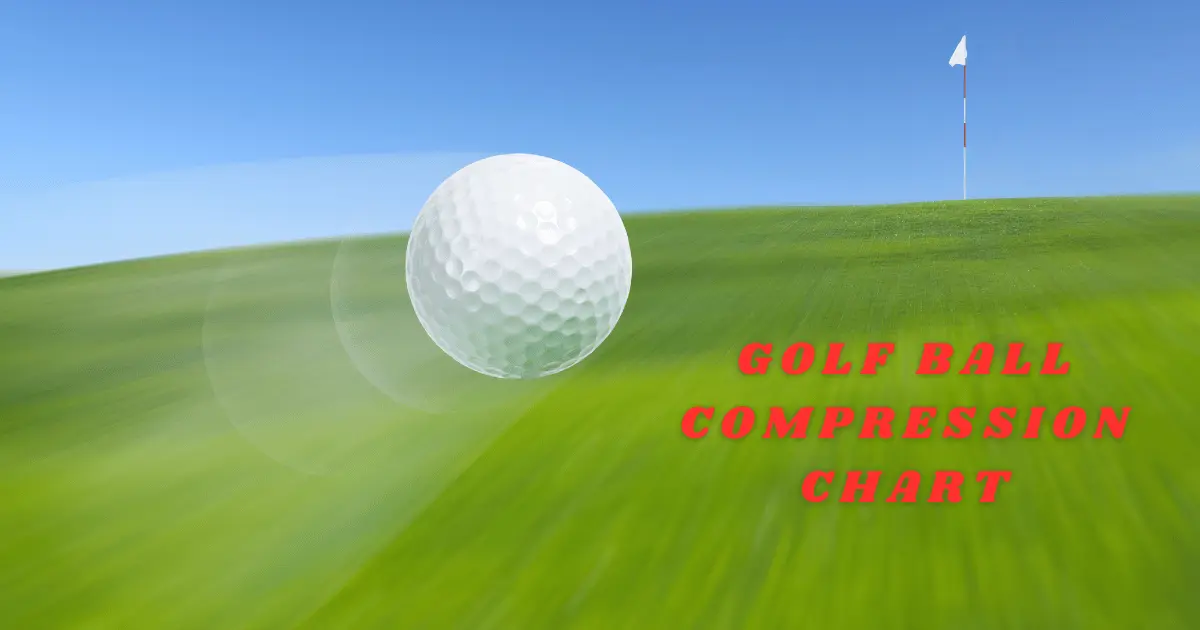If you want to improve your golf game, it’s not just about good training or the right clubs—choosing the right golf ball is also very important. One of the most important factors that often gets overlooked by players is the golf ball compression chart .
So, what is compression? In simple terms, it’s a measure of how easily the ball compresses when you hit it. If the ball is soft, it will compress easily, and if it’s hard, it will require more force to compress.
What’s the benefit of this? If there’s a balance between your swing speed (how fast your club hits the ball) and the ball’s compression, it can help you achieve better distance, better control, and more spin control. For example, if your swing speed is slow, a softer ball will work better for you. And if your swing speed is fast, a harder ball will be more suitable.
Knowing which ball is best for your golf game depends on how strong your swing is and how fast your club moves. A golf ball compression chart can help you figure out which ball will work best for your speed.
Remember, the goal of playing golf isn’t just to hit the ball far, but also to get it to the right spot. So, choosing the right ball plays a big role in improving your performance.
In the end, whether you’re a beginner or an experienced player, understanding golf ball compression and choosing the right ball accordingly can make a noticeable difference in your game. Once you understand this, you’ll know which ball is best for you and how much it can improve your game.
What is Golf Ball Compression? Explained

The compression of a golf ball refers to how much it can compress when you hit it with a club. It is measured on a scale from 0 to 200, which tells you how soft or hard the ball is.
Soft balls (like those with 70 or lower compression) can compress more, and when hit with a club, they bend more. These balls are usually considered better for players with slower swing speeds. On the other hand, hard balls (with 90 or higher compression) compress less and require a faster swing speed to perform well.
Think of it this way: when you hit a ball, the clubface compresses it for a short time. This compression causes the ball to bend slightly, and this bending determines how much energy is transferred from the club to the ball. This affects the ball’s distance, spin, and control.
If you want to choose the right ball for your swing, it’s very important to understand your swing speed and what type of ball you need. This will help you get better results and make the game more enjoyable.
Why Compression Matters for Your Golf Game
Compression is not just a technical term—it directly affects how you play golf. It means that when you hit the ball, how hard it moves and the way it behaves are greatly influenced by compression. Now, the question is, why is it important?
Let’s break it down in simple terms…..
Distance:
When you hit the ball correctly, it moves with more force, giving you greater distance. If your swing speed (how fast you hit the ball with your club) and the ball’s compression don’t match, you might not get much distance from the tee.
Control:
Compression also tells you how much control you have over the ball. If the ball’s compression matches your swing, you’ll have better control over your shots. This is especially important when you’re playing near the green.
Feel:
The sensation when you hit the ball can also vary. Some players prefer soft and comfortable balls, while others like firm and solid ones. This feeling depends on your personality and playing style.
Spin:
Compression affects spin too. Spin refers to how much the ball rotates and how it can be stopped on the green. If you want more control over your shots, choosing the right compression ball is essential.
In the end, by using a golf ball compression chart, you can find a ball that suits your swing speed and playing style. This way, you’ll gain a competitive edge and understand the game better.
So, the whole point is to improve your game and enjoy it even more!
Golf Ball Compression Chart vs Swing Speed Chart

When you play golf, two important things help improve your game: first, how fast you swing your club (swing speed), and second, the type of ball you use. The compression or density of a golf ball tells you how easily the ball can be compressed when you hit it.
Now, think about how fast your club moves. If your swing speed is low, for example, only 85 miles per hour, a soft ball (which compresses easily) will work better for you. But if your club moves very fast, for example, 110 miles per hour, a harder ball can give you more distance and better control.
This is because when your club hits the ball, the ball’s compression and your swing speed need to match each other. If you have made the right match, you will get the most benefit from every shot.
Understanding the relationship between your swing speed and the ball’s compression is very important to improve your game. For this, you can use a golf ball compression chart. This chart will tell you which ball to use according to your swing speed. This way, you can get the most out of every shot.
Just understand that choosing the right ball for your swing is very important. If you understand this correctly, your game will improve.
Golf Ball Compression Charts
Golf ball compression charts are invaluable tools for players looking to fine-tune their equipment. These charts categorize balls based on their compression ratings, making it easy to find the right fit for your swing speed.
Let’s break down the different types of compression balls and how they perform.….
High Compression Golf Balls
High compression golf balls (90 and above) are designed for players with fast swing speeds (over 100 mph). These balls are firmer and require more force to compress, making them ideal for advanced players who generate significant clubhead speed.
High-compression balls offer…..
- Greater distance: The firmness allows for maximum energy transfer, resulting in longer drives.
- Lower spin: This reduces the likelihood of hooks or slices, providing more control off the tee.
- Durability: High-compression balls tend to last longer, making them a cost-effective choice for frequent players.
Popular high-compression balls include ……….
| Golf Ball | Layers | Golf Ball Compression | Swing Speed | Price Bracket |
|---|---|---|---|---|
| Mizuno RBX Tour X | 4 Piece | High 110 | + 105 mph | $$$$ |
| Cut DC | 4 Piece | High 105 | + 105 mph | $$$ |
| Taylormade TP5X Pix | 5 Piece | High 100 | + 105 mph | $$$$ |
| Titleist Pro V1 X | 4 Piece | High 100 | + 105 mph | $$$ |
| Volvik S4 | 4 Piece | High 95 | + 95 mph | $$$$ |
| Callaway Chrome Soft X | 4 Piece | High 90 | + 95 mph | $$ |
| Cut Blue | 4 Piece | High 90 | + 95 mph | $$$$ |
| Mizuno RB Tour | 4 Piece | High 90 | + 85 mph | $$$ |
| Vice Pro Plus | 4 Piece | High | + 85 mph | $$$ |
| Volvik Crystal | 3 Piece | High | + 85 mph | $$$ |
| Srixon Z-Star XV | 4 Piece | High 100 | + 105 mph | $$$$ |
| Taylormade TP5X | 5 Piece | High 90 | + 95 mph | $$$$ |
| Wilson Staff Tour | 4 Piece | High | + 95 mph | $$$$ |
Medium Compression Golf Balls
Medium compression golf balls (70-90) are versatile and suit a wide range of players, particularly those with moderate swing speeds (85-100 mph). These balls strike a balance between distance and feel, offering:
- Moderate spin: Ideal for players who want control without sacrificing distance.
- Soft feel: Provides a comfortable sensation on impact, making them popular among mid-handicappers.
- Adaptability: Works well for both long drives and short game precision.
Examples of medium-compression balls include …….
| Golf Ball | Layers | Golf Ball Compression | Swing Speed | Price Bracket |
|---|---|---|---|---|
| Callaway Warbird | 2 Piece | High 90 | + 95 mph | $ |
| Snell MTB-X | 3 Piece | High 90 | + 95 mph | $$$ |
| Srixon Z Star | 3 Piece | High 90 | + 95 mph | $$$ |
| Titleist Pro V1 | 3 Piece | High 90 | + 95 mph | $$$$ |
| Volvik XT AMT | 4 Piece | High 95 | + 95 mph | $$$$ |
| Bridgestone Tour B X | 4 Piece | High 90 | + 95 mph | $$ |
| Taylor made TP5 Pix | 4 Piece | High 90 | + 95 mph | $$$$ |
| Volvik S3 | 4 Piece | High 90 | + 85 mph | $$$ |
| Cut Grey | 4 Piece | High | + 85 mph | $$$ |
| Volvik Crystal | 3 Piece | High | + 85 mph | $$$ |
| Titleist AVX | 3 Piece | Medium 80 | + 85 mph | $$$$ |
| Volvik Vivid | 3 Piece | Medium 80 | + 95 mph | $$$$ |
| Wilson Tour Velocity Feel | 2 Piece | Medium | + 95 mph | $$$$ |
Low Compression Golf Balls
Low compression golf balls (below 70) are perfect for players with slower swing speeds (under 85 mph). These balls compress easily, making them ideal for seniors, beginners, or anyone looking for extra distance without needing a fast swing. Benefits include:
- Increased distance: The softness allows for better energy transfer at lower swing speeds.
- Enhanced feel: Provides a soft, responsive sensation, which many players find enjoyable.
- Forgiveness: Low-compression balls are more forgiving on mishits, helping you maintain consistency.
Popular low-compression options include the ……
| Golf Ball | Layers | Golf Ball Compression | Swing Speed | Price Bracket |
|---|---|---|---|---|
| Bridgestone Tour B RX | 2 Piece | Low (65) | < 80 mph | $ |
| Bridgestone Tour B RXS | 3 Piece | Low (65) | < 80 mph | $$$ |
| Cut Matte | 3 Piece | Low (65) | < 80 mph | $$$ |
| Titleist Tour Soft | 3 Piece | Low (65) | < 80 mph | $$$$ |
| Cut Red | 4 Piece | Low (60) | < 80 mph | $$$$ |
| Srixon Soft Feel | 4 Piece | Low (60) | < 80 mph | $$ |
| Taylor made TP5 Pix | 4 Piece | Low (60) | < 80 mph | $$$$ |
| Wilson Duo Professional | 4 Piece | Low (60) | < 80 mph | $$$ |
| Cut Grey | 4 Piece | Low (50) | < 70 mph | $$$ |
| Bridgestone e12 Soft | 3 Piece | Low (50) | < 70 mph | $$$ |
| Titleist AVX | 3 Piece | Low (50) | < 70 mph | $$$$ |
| Wilson Fifty Elite | 3 Piece | Low (50) | < 70 mph | $$$$ |
| Callaway Superhot | 2 Piece | Low (50) | < 70 mph | $$$$ |
Kirkland Golf Ball Compression
Kirkland’s signature golf balls have a compression rating of 94, which means they fall into the “high compression” category. These balls are made with three layers (3-piece) and have a urethane coating. Their features are very similar to other popular balls like the Srixon Z-Star or Titleist Pro V1.
This means that Kirkland’s golf balls are of good quality, and using them can provide a better experience while playing golf. For those looking for balls that are suitable for intermediate-level players, these balls can be an excellent choice.
What Does Golf Ball Compression Rating Mean?
Golf balls come in different levels of hardness, which is called compression rating. This rating can range from 30 to 120. If the rating is low, for example 30, the ball is soft. And if the rating is high, like 120, the ball is very hard.
Soft balls are usually better for beginners or those who don’t hit the ball very hard. Hard balls are more suitable for experienced players because they offer more control and distance.
So, depending on your playing style and skill level, you can choose which type of ball to use. Soft balls give good results even with lighter hits, while hard balls perform better with stronger hits.
Does Low Compression or High Compression Cover More Distance?
The answer depends on the type of ball you use and your swing style. Generally, for those who swing slowly, low-compression balls are better. These balls are designed to compress easily and transfer energy more efficiently, allowing for greater distance.
On the other hand, if you have a fast swing, high-compression balls might be more effective for you. These balls require more power to compress properly and achieve greater distance.
The key point is that it’s very important to choose a ball that matches your swing speed. This will help you achieve more distance while playing golf. If you find it difficult to understand which ball is better for which type of player, you can use a golf ball compression chart to make the best choice. This chart provides easy-to-understand information about different types of balls.
In this way, maintaining the right balance between your swing speed and the ball will help you achieve better results in the game.
How Does Compression Affect Spin on the Ball?
Compression plays a significant role in spin rates. High-compression balls tend to produce lower spin, which can help reduce hooks and slices off the tee. Low-compression balls, on the other hand, generate more spin, making them ideal for players who want better control around the greens.
The key is finding a balance that suits your game. If you struggle with accuracy off the tee, a high-compression ball might be the answer. If you need more spin for approach shots, a low-compression ball could be the better choice.
How Can Low Spin, Low Compression Balls Grab the Green?
Low spin, low compression balls are designed to provide a balance of distance and control. While they may not generate as much spin as high-compression balls, they still offer enough grip to hold the green on approach shots. These balls are ideal for players who want a soft feel without sacrificing too much spin.
Does Compression Affect Shots Around the Green?

Absolutely. Compression influences how the ball reacts on short shots, chips, and putts. Low-compression balls tend to feel softer and provide more feedback, making them easier to control on delicate shots. High-compression balls, while firmer, can still offer excellent control for players with faster swings.
Which Ball Matches Which Driver Swing Speed?
Matching your golf ball to your swing speed is crucial for optimizing performance.
Here’s a breakdown of which balls work best for different swing speeds.….
Best for Fast Swing Speeds (Over 100 mph)
If you’re swinging over 100 mph, high-compression balls (90 and above) are your best bet. These balls are designed to handle the force of a fast swing, providing maximum distance and control. Popular options include the Titleist Pro V1x and TaylorMade TP5x.
Ideal for Average Swing Speeds (85 – 100 mph)
Players with moderate swing speeds should look for medium-compression balls (70-90). These balls offer a balance of distance, control, and feel, making them versatile for a wide range of players. The Bridgestone Tour B RX and Srixon Q-Star Tour are excellent choices.
Best for Slow Swing Speeds (Below 85 mph)
For slower swing speeds, low-compression balls (below 70) are ideal. These balls compress easily, helping you achieve greater distance without needing a fast swing. The Callaway Super soft and Wilson Staff Duo Soft are great options.
Does the Number of Layers Make a Difference?
If the number of layers in your golf ball varies, the results will also differ based on the players’ skills. If your swing speed is low and you are still new to the game, especially expensive premium 5-piece golf balls may not be suitable for you. In fact, it is very important to choose the right ball for you.
Here’s what ball might be better for you….
Two-piece balls: These are usually used by those who play casually or have a low swing speed. These balls are also more reasonably priced. For example, the Srixon Soft Feel is a great two-piece ball.
Three-piece balls: These are somewhat suitable for all players, especially those with varying swing speeds and skill levels. The Titleist Pro V1 is a popular ball of this type. But if you lose very few balls during play, this ball might be good for you. Another good three-piece ball is the Srixon Z-Star.
Four and five-piece balls: These are specially made for expert players. Their aim is to improve both distance and control. If you are very confident in your game and your skills are at the best level, these balls can give you the best performance.
How Do High and Low Compression Balls Feel?
The feel of golf balls depends a lot on the materials used and their construction. If the ball has high compression, it feels firm, and when it hits the club, it makes a sharp, click-like sound. On the other hand, if the ball has low compression, it feels soft with the club, and the sound it makes is more pleasant.
But it’s not just compression that makes a difference. The outer part of the ball, called the “cover,” also affects its feel. If the ball’s cover is made of urethane, it feels soft and smooth. Usually, this type of ball is used in 3-piece golf balls.
In comparison, balls with covers made of ionomer or surlyn feel firmer and more solid. They also produce a click-like sound. These types of balls are commonly found in 2-piece golf balls.
All these factors together create the feel and performance of a golf ball. That’s why choosing the right ball is very important when you’re playing golf.
Final Thoughts on Mastering Golf Ball Compression for Better Performance
If I have learned one thing in my 25 years of playing golf and watching other golfers, it is that a more expensive ball does not always mean a better result.
When people start playing golf, they think they should only use expensive and well-known brand balls, like Titleist Pro V1, Callaway Chrome Soft, or TaylorMade TP5. But in reality, it is not necessary that these balls will make a big difference in your game. These balls cost around $4 or more per ball, but do they really improve the game of an average player? No, not always.
Personally, I use the Volvik S4 ball because it suits my style of play. It is best for my swing speed (115 miles per hour) and my shots near the green. This ball might not be suitable for other players I play with, as their needs may be different. Some players perform better with cheaper balls.
In golf, every player should find a ball that matches their game. If you have some experience playing golf, try playing with the same type of ball. Playing with different balls each time will not work. Find a ball that fits your game and consider the results. Understanding and learning with the ball is very important. This way, you will improve your game and also avoid extra strokes. I promise, this will be beneficial for you!
Also, remember that the goal of playing golf is not just to hit the ball far, but to improve your game and enjoy it. So, when choosing a ball, consider your game’s needs and feel comfortable playing with it.


